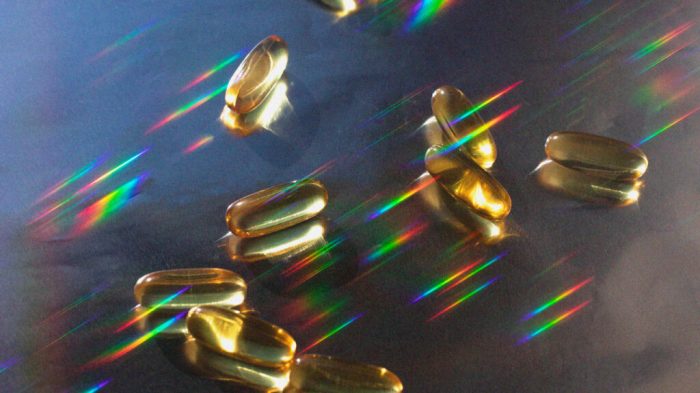Studies investigating the role of vitamin D in preventing or treating COVID-19 have drawn conflicting conclusions. But should a lack of evidence stop us from topping up our vitamin D levels as the Northern Hemisphere heads toward winter?
Most people know vitamin D as an essential vitamin for healthy bones and teeth. But researchers have attributed a host of other functions to the vitamin, and one of these is supporting the immune system.
A systematic review and meta-analysis from 2017 in BMJ drew on data from 25 randomized controlled trials to look at whether taking a vitamin D supplement could prevent acute respiratory tract infections.
The international research consortium, led by Prof. Adrian R. Martineau, from the Centre for Primary Care and Public Health and the Asthma UK Centre for Applied Research, at Queen Mary University of London, in the United Kingdom, looked at data from nearly 11,000 study participants.
Prof. Martineau and colleagues concluded that “Vitamin D supplementation was safe and it protected against acute respiratory tract infection overall.”
But does vitamin D have a part to play in COVID-19? By now, a number of studies have looked for links between the vitamin and the condition, and their findings have conflicted.
In this Special Feature, we investigate why some experts have suggested a link between COVID-19 and vitamin D, and we dig deep to explore how convincing the evidence from the latest studies really is.
We also discuss whether taking a vitamin D supplement can have realistic benefits, particularly for those in communities that have been hit the hardest by COVID-19.
Why vitamin D?
A number of experts have cited the 2017 study as circumstantial evidence that vitamin D may have a protective effect against COVID-19.
Their articles have appeared in journals such as The Lancet Diabetes & Endocrinology, BMJ Nutrition, Prevention & Health, Metabolism, and Aging Clinical and Experimental Research.
The common thread is that they highlight that adequate vitamin D levels may help our immune systems fight off the SARS-CoV-2 virus, as with other viruses that cause upper respiratory infections. People with vitamin D deficiency may, therefore, not be able to do this as effectively.
One aspect of this is that it provides an elegant excuse about why people from marginalized racial and ethnic groups have been disproportionately affected by COVID-19, as some scientists have suggested.
There is already evidence to suggest that people with darker skin tones who live in Northern latitudes have inadequate vitamin D levels.
To make vitamin D, our bodies convert a metabolite of cholesterol in our skin cells into an inactive form of vitamin D when we are exposed to sunlight, specifically to ultraviolet B (UVB) light. This inactive form then undergoes further chemical modification in the liver and kidneys.
The pigment melanin that gives our skin its color stops UVB light from reaching the cells. Hence, the darker a person’s skin, the more UVB light they need to make adequate levels of vitamin D from sunshine alone.
A study in the American Journal of Clinical Nutrition found that 17.5% of Black study participants in the United States were classed as being at risk of vitamin D deficiency, a figure nearly 8.5 times greater than the percentage of their white counterparts who were at risk of the deficiency.
Data from the past few months have shown that in the U.S. and the U.K., Black people are more likely to die if they have COVID-19 than white people.
Given the relationship between vitamin D and respiratory infections, it is perhaps not unsurprising that many people have suggested a tentative link between the vitamin and the disease.
So, let’s look at the studies that have sought to investigate this link in more detail.
Evidence so far
Back in June, the National Institute for Health and Care Excellence, in the U.K., reported that “There is no evidence to support taking vitamin D supplements to specifically prevent or treat COVID‑19.”
The organization based their statement on data from a number of published studies, all of which they deemed to contain a “very low quality of evidence.”
In August, a research team from the University of Glasgow, in the U.K., looked at the vitamin D levels of 341,484 participants in the U.K. Biobank health data repository. Of these, 656 had been to the hospital with COVID-19, and 203 had died.
Once the authors accounted for confounding factors, they concluded that there was no link between vitamin D levels and the likelihood of needing hospitalization for COVID-19 or dying from the disease.
The main limitation, the team noted, was that the vitamin D measurements had been taken roughly 10 years earlier.
Also in August, researchers in Spain reported the results of a small clinical study looking at intensive care unit (ICU) admissions and vitamin D supplementation.
The team gave one group of patients a supplementary high dose of calcifediol, a precursor molecule to vitamin D, in addition to a range of drugs to treat COVID-19. The other group did not receive calcifediol.
“Of [the] 50 patients treated with calcifediol, one required admission to the ICU (2%), while of [the] 26 untreated patients, 13 required admission (50%),” the researchers reported.
While these numbers seem impressive, the study was small and has several limitations. One is that the vitamin D levels of the participants were not measured before and during the study. There were also differences in confounding factors, such as other health conditions, between the two groups.
In addition, the study was open label, so both the researchers and the participants knew who had received vitamin D, which leaves room for bias.
Who tests positive for COVID-19?
A study published at the start of September in JAMA Network Open looked at the vitamin D levels of people who had received a COVID-19 test.
The research team, from the University of Chicago, in Illinois, used data from 4,314 people who had received a COVID-19 test at the university’s medical center between March 3 and April 10, 2020.
Looking at the medical records, they identified 489 individuals who had their vitamin D levels measured sometime in the year prior to the test, but not in the 14 days before it.
From this group, 71 people had received positive COVID-19 test results. Among them, 32 had vitamin D deficiency when their levels were last tested, and 39 did not have the deficiency.
The difference between these numbers did not reach statistical significance.
The team then used a model to predict how many people likely had vitamin D deficiency at the time of their COVID-19 tests, based on previous vitamin D tests and any information about subsequent vitamin D supplements.
When the researchers looked at positive COVID-19 tests in relation to predicted vitamin D status, their model showed that 21.6% of people who likely had the vitamin deficiency at the time of testing would receive positive COVID-19 test results. This figure was 12.2% among people without the deficiency.
While these data may indicate that vitamin D plays a role in the likelihood of receiving a positive COVID-19 test result, the researchers cautiously described the many limitations of their study.
In the paper, they note that “Randomized clinical trials of interventions to reduce vitamin D deficiency are needed to determine if those interventions could reduce COVID-19 incidence, including both broad population interventions and interventions among groups at increased risk of vitamin D deficiency and/or COVID-19.”
Also in September, the journal PLoS ONE published the findings of a large retrospective study conducted by researchers from Quest Diagnostics, in Secaucus, NJ, and the Boston University School of Medicine, in Massachusetts.
The team looked at data from 191,779 people with recorded COVID-19 test results and information about vitamin D levels from tests conducted in the preceding 12 months.
Their analysis showed that 8.1% of 27,870 people with adequate vitamin D levels had tested positive for a SARS-CoV-2 infection, while 12.5% of the 39,190 individuals with vitamin D deficiency had received positive results.
While the data are once again promising, there are a number of limitations. For example, the researchers used a model that the data did not fit particularly well.
Also, the vitamin D test results may not have accurately reflected each person’s vitamin D status at the time of their COVID-19 test. The team acknowledges that there may be other confounding factors that they did not control for.
In addition, it is worth noting that Quest Diagnostics sells a vitamin D test. And the only author of the study who is not directly affiliated with the company — Dr. Michael F. Holick, from Boston University — receives consulting fees from Quest Diagnostics and has authored a book that advocates vitamin D as a cure for common health problems.
Vitamin D and COVID-19 complications
Medical News Today recently reported on a study that looked at the vitamin D status of a group of patients who required hospital treatment for COVID-19.
The researchers found that only 32.8% of the 235 patients had vitamin D levels of at least 30 nanograms per milliliter, which they classed as sufficient. They also saw an association between sufficient vitamin D levels and having less severe COVID-19.
Although the study adds to the body of evidence that argues for a protective effect of vitamin D against COVID-19, it only included a small number of patients, and the researchers did not account for several potential confounding factors, including socioeconomic status, that could have had an impact on COVID-19 severity.
The authors themselves call for larger studies and randomized clinical trials to gain further insights.
Having a data set that is robust enough to account for a range of confounding factors will make the crucial difference between potential associations or correlations and a link that is underpinned by sound scientific data.
But do the effects really matter, when vitamin D can easily be supplemented?
Vitamin D supplements for all?
Writing in The Lancet Diabetes & Endocrinology, Prof. Martineau and Prof. Nita Gandhi Forouhi, of the University of Cambridge School of Clinical Medicine, in the U.K., recently suggested that it is worth taking a vitamin D supplement to ensure adequate levels while clinical studies into the link between vitamin D and COVID-19 are ongoing.
They explain:
“Pending results of such trials, it would seem uncontroversial to enthusiastically promote efforts to achieve reference nutrient intakes of vitamin D, which range from 400 [international units (IU) per day] in the U.K. to 600–800 IU per day in the U.S.A.”
“These are predicated on benefits of vitamin D for bone and muscle health, but there is a chance that their implementation might also reduce the impact of COVID-19 in populations where vitamin D deficiency is prevalent; there is nothing to lose from their implementation, and potentially much to gain,” the authors continue.
Many governments around the world have set recommended daily levels of the vitamin to ensure that people take in enough. This was true before COVID-19.
In the U.S., the National Institutes of Health (NIH) recommend that children older than 1 year and adults up to the age of 70 obtain 600 IU or 15 micrograms (mcg) of vitamin D each day. They advise people aged 71 or older to aim for 800 IU or 20 mcg.
The NIH recommend reaching these targets through a combination of the diet, sunlight exposure, and supplements.
Natural food sources of vitamin D include oily fish, beef liver, cheese, egg yolks, and mushrooms. Many breakfast cereals and milk and non-dairy alternatives are fortified with vitamin D, as are infant formulas.
In the U.K., Public Health England (PHE) recommend 400 IU or 10 mcg per day for people of all ages. Most people are able to get sufficient vitamin D from their diet and sunlight exposure in the spring and summer. This is not necessarily so during the rest of the year.
“Since it is difficult for people to meet the 10 [mcg] recommendation from consuming foods naturally containing or fortified with vitamin D, people should consider taking a daily supplement containing 10 [mcg] of vitamin D in autumn and winter,” PHE recommend.
They also say that people with little or no sunlight exposure due to work or personal circumstances and “Ethnic minority groups with dark skin from African, Afro-Caribbean, and South Asian backgrounds may not get enough vitamin D from sunlight in the summer and therefore should consider taking a supplement all year round.”
In light of the COVID-19 pandemic, the U.K. government is actively encouraging everyone to take a daily supplement of the vitamin, as many people may be spending more time indoors.
Of course, it makes sense for governments and public health bodies to recommend supplements for those struggling to get enough vitamin D.
But the consumption of dietary supplements is not ubiquitous, and there is variability among different racial and ethnic groups.
A 2016 study in JAMA that looked at trends in multivitamin consumption among U.S. adults found that in 2011–2012, 58% of non-Hispanic white study participants took multivitamins. For non-Hispanic Black participants the figure was 41% and for Mexican American participants it was 29%.
It is worth mentioning that excessive levels of vitamin D are toxic. “Vitamin D toxicity almost always occurs from overuse of supplements,” the NIH warn.
The upper daily limit of vitamin D for children aged 1–8, they report, is 63–75 mcg or 2,500–3,000 IU. For children aged 9 or over, teens, and adults, it is 100 mcg or 4,000 IU.
Vitamin D, COVID-19, and skin color
The risk of dying from COVID-19 is disproportionately high among people from marginalized ethnic and racial backgrounds.
In May, MNT reported on large study from the U.K. that found that preexisting conditions could not explain this increase in risk — but that there was a clear association with being a part of a racial or ethnic minority group or having experienced poverty.
Considering this data about COVID-19 risk and the fact that many people with darker skin in Northern climates do not have adequate vitamin D levels: Is the sunshine vitamin the reason that people from marginalized ethnic and racial groups are experiencing worse COVID-19 outcomes?
So far, the hypothesis remains just that.
Future scientific investigations into the suggested link between vitamin D status, COVID-19 outcomes, and skin color may provide clarity.
“Since African American and Hispanic populations in the U.S. have both high rates of vitamin D deficiency and bear a disproportionate burden of morbidity and mortality from COVID-19, they may be particularly important populations to engage in studies of whether vitamin D can reduce the incidence and burden of COVID-19,” the authors of the JAMA Network Open study discussed above note in their paper.
Yet vitamin D is likely only going to be one part of the complex puzzle that is COVID-19.
In a letter published in the Journal of Human Hypertension, a group from the U.S. and Argentina suggest that genetic susceptibility may be to blame. They point to a range of health conditions that affect African Americans more than white Americans.
“The usual explanation for these differences is the low socioeconomic status and educational levels, the social environment, lifestyle habits, and less access to healthcare services,” they write. “However, there are pieces of evidence that these non-favorable conditions are not enough, and there are other influential factors that may help [lead researchers] to a better approach to the real problem, like some genetic [factors].”
However, Dr. Winston Morgan, from the University of East London, in the U.K., has pointed to the lack of “evidence that the genes used to divide people into races are linked to how our immune system responds to viral infections,” in an opinion piece in The Guardian.
Instead, there is mounting evidence that structural racism is a crucial factor in why marginalized communities are harder hit by COVID-19.
In an exclusive opinion piece for MNT, Dr. Morgan discussed the outcomes of a recent PHE review into why COVID-19 disproportionately affects people from marginalized racial and ethnic groups.
He notes that the review’s recommendations focus on the need to address structural problems in health outcome disparities.
Vitamin D does get a mention. The review’s authors highlight the need for “further evidence as a matter of urgency” in order to deepen our understanding of why people of color are disproportionately experiencing negative outcomes of COVID-19.
In an interview with MNT, Assistant Prof. Tiffany Green, from the University of Wisconsin-Madison School of Medicine and Public Health, explained that “Those of us who work in the health disparities space are saddened but not surprised at the race-based disparities that the COVID-19 crisis has brought to light.”
She pointed to the “racialized class and occupational structures of the U.S.” as a major factor that contributes to who is exposed to the SARS-CoV-2 virus.
To conclude, it makes sense to look after our vitamin D levels as part of our general health, and by extension our ability to fight off infections. But science rarely has easy answers.
In order to navigate our way out of the COVID-19 pandemic, we would be better served if we were able to accept that we are up against a complex interplay of societal and immunological factors.










